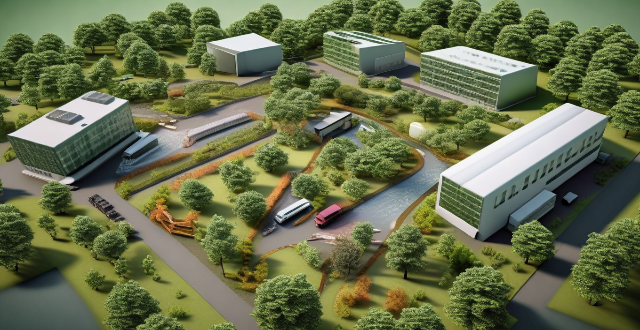To reach ambitious climate objectives, innovations areTo reach ambitious climate objectives, innovations are renewable energy sources, carbon capture sustainable agriculture and forestry, circular economy and waste management, policy and finance, and education and awareness. Key areas include improved insulation technology, smart building management systems, electric vehicles, public transit efficiency, photovoltaic efficiency, offshore wind farms, enhanced geothermal systems, direct air capture, bioenergy with carbon capture and storage, precision farming, agroforestry, reforestation and afforestation, resource recovery, biodegradable materials, zero waste strategies, carbon pricing, green bonds, public-private partnerships, educational programs, and behavior change campaigns. Collaboration among governments, businesses, researchers, and citizens worldwide is crucial to drive these changes forward.

What Innovations are Needed to Reach Ambitious Climate Objectives?
To achieve ambitious climate objectives, a multitude of innovations across various sectors is required. These innovations should focus on reducing greenhouse gas emissions, increasing energy efficiency, promoting renewable energy sources, and enhancing carbon sinks. Here are some key areas where innovations are needed:
1. Energy Efficiency
Buildings
- Insulation Technology: Improved insulation materials can reduce heating and cooling needs.
- Smart Building Management Systems: Automated systems that optimize energy use based on occupancy and external conditions.
- Green Roofs and Walls: Vegetation on roofs and walls can provide insulation and absorb rainwater.
Transportation
- Electric Vehicles (EVs): Advances in battery technology and charging infrastructure are crucial for widespread adoption.
- Public Transit Efficiency: More efficient buses and trains can reduce the need for personal vehicles.
- Aerodynamic Design: Improving the fuel efficiency of planes and ships through better design.
2. Renewable Energy Sources
Solar Power
- Photovoltaic Efficiency: Increasing the efficiency of solar panels to generate more power from the same area.
- Concentrated Solar Power (CSP): Using mirrors or lenses to concentrate sunlight and generate high-temperature steam for electricity production.
Wind Power
- Offshore Wind Farms: Placing wind turbines in coastal waters can harness stronger, more consistent winds.
- Vertical Axis Turbines: These turbines can accept wind from any direction, making them suitable for urban environments.
Geothermal Energy
- Enhanced Geothermal Systems (EGS): Techniques to create artificial reservoirs for geothermal energy extraction in areas without natural hot water reservoirs.
3. Carbon Capture and Storage (CCS)
- Direct Air Capture (DAC): Devices that remove CO2 directly from the atmosphere.
- Bioenergy with Carbon Capture and Storage (BECCS): Combining biomass energy production with CCS to create a negative carbon emission source.
4. Sustainable Agriculture and Forestry
- Precision Farming: Using data analytics and GPS to optimize crop yields while minimizing inputs like water and fertilizers.
- Agroforestry: Integrating trees into farming practices to improve soil health and sequester carbon.
- Reforestation and Afforestation: Planting new forests and restoring damaged ones to increase carbon sinks.
5. Circular Economy and Waste Management
- Resource Recovery: Developing technologies to recover valuable materials from waste streams.
- Biodegradable Materials: Creating materials that break down naturally, reducing long-term waste accumulation.
- Zero Waste Strategies: Encouraging product designs that minimize waste and promote recycling and reuse.
6. Policy and Finance Innovations
- Carbon Pricing: Mechanisms like carbon taxes or cap-and-trade systems to make fossil fuels more expensive relative to clean alternatives.
- Green Bonds: Financing tools specifically designed to fund climate-friendly projects.
- Public-Private Partnerships (PPPs): Collaborations between government agencies and private companies to leverage resources and expertise for climate action.
7. Education and Awareness
- Educational Programs: Incorporating climate change education into school curriculums and public awareness campaigns.
- Behavior Change Campaigns: Encouraging individuals to adopt sustainable habits through persuasive messaging and incentives.
By focusing on these areas of innovation, we can move closer to achieving our ambitious climate objectives. It will require collaboration among governments, businesses, researchers, and citizens worldwide to drive these changes forward.